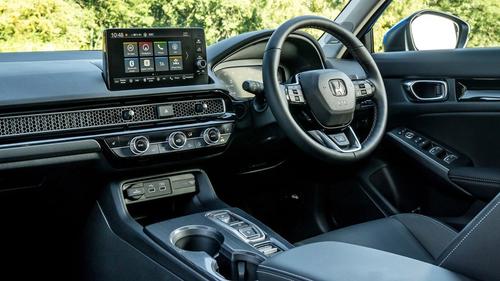














Honda Civic Review

The latest Honda Civic promises to be a dream to live with. It’s economical, fun to drive, comfortable and should be utterly reliable.
And, thanks to a growth spurt, it’s one of the roomiest hatches – both for passengers and luggage.
- Fun and economical
- Refined
- Very practical
- Costs more than rivals
- Infotainment system could be better
- A couple of rivals are more premium
Should I buy a Honda Civic?
The Honda Civic has lived many lives. Over its 10 previous generations, it’s been a hybrid, a hot hatch, a Fast & Furious staple, and even an estate that ranged from economical diesels to a full-bore racing car.
It’s also seen plenty of styling detours – like 2001’s ‘breadvan’ shape and 2006’s spaceship-like design. And, after two generations of extroverted (some might say fussy) styling, the new 11th-generation Civic has a much cleaner and more restrained look.
"It's really easy to accelerate up to motorway speeds. At lower speeds, the driving experience is even better"
The amount of choice you get has also been pared back. There’s one body style, one engine – excluding the sublime Civic Type R hot hatch – and just three trim levels to decide between. The end result is just a fantastically well-sorted car that excels in most areas.
So it’s a shame that the Civic isn’t more common – Honda’s priced it in the clouds, which doesn’t help, but it’s also up against high-riding SUVs. If you can overlook the likes of the Ford Kuga and Kia Sportage, you’ll find the Civic to be a bit of a hidden gem.
Interior and technology
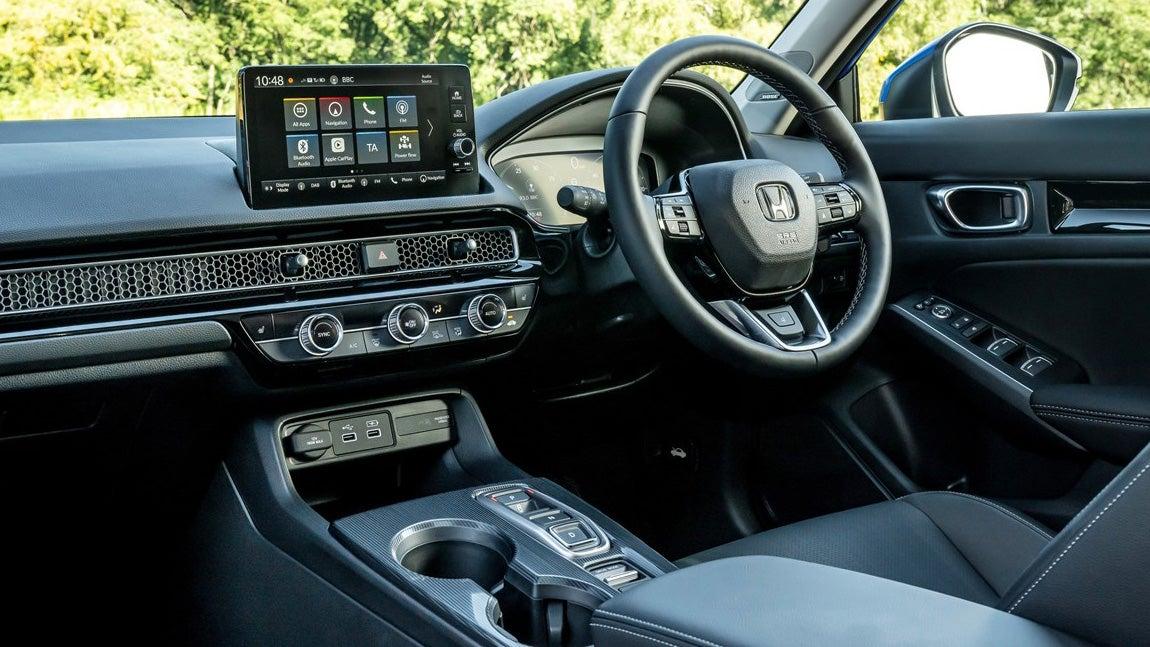
Previous Civic interiors have been rather interesting. Some had wild designs, and some felt phoned in and cheap. Thankfully, Honda has upped the game for the latest Civic. All the dials, buttons and touchpoints feel solid and tactile, with the proper climate controls being a highlight.
The interior feels grown up, with excellent build quality and an intuitive layout. Honda has resisted the urge to slap piano black trim across the centre console, too, although the textured trim you get divided opinions in our team.
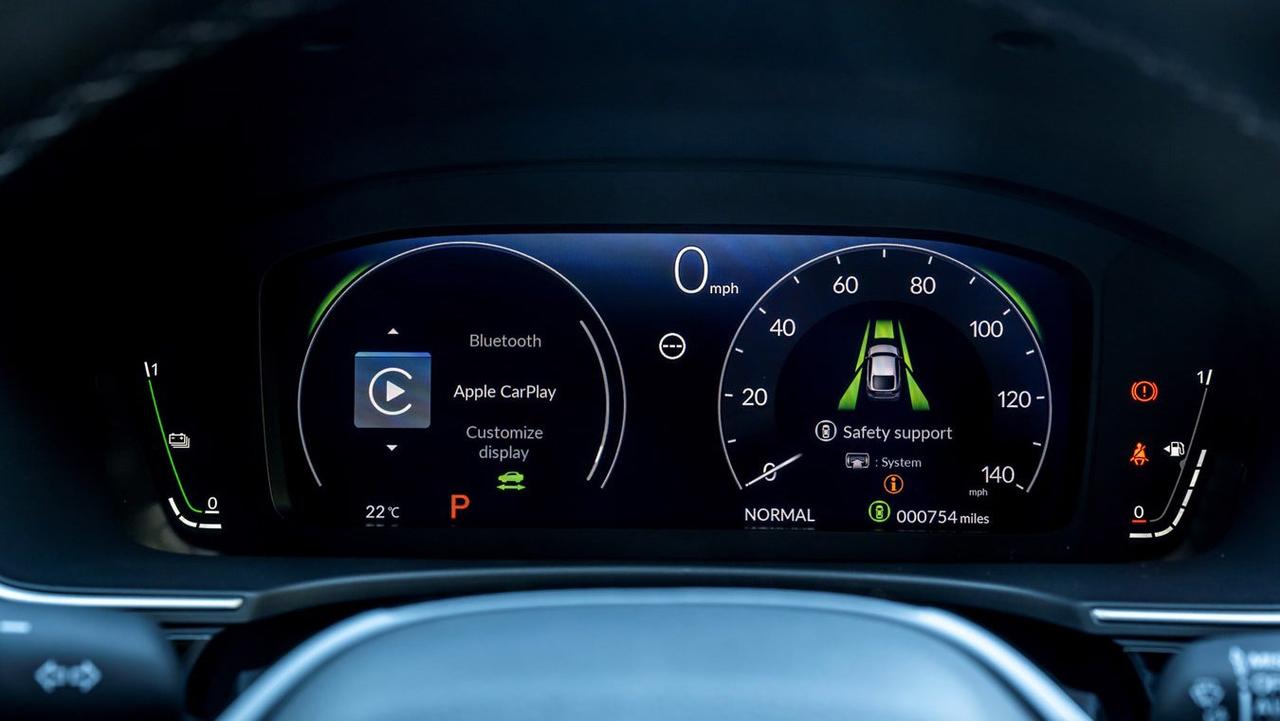
The standard-fit digital dials are clear and easy to read, especially with the high-contrast text, but they don’t offer a huge amount of customisation.
The nine-inch touchscreen, meanwhile, is a night-and-day improvement over the old Civic – which… isn’t saying much. The new screen, which we’ve also sampled in the Jazz and ZR-V, feels quite basic and sometimes the layouts are a little confusing at first glance.
On the radio screen, for example, there are three buttons that simply say ‘no info’, while there’s a whole tile on the home screen dedicated to turning traffic announcements on and off. Handy if you don’t have a smartphone but, if you do, you’ll be best off using the (now wireless) Android Auto/Apple CarPlay compatibility and using your phone’s more up-to-date navigation apps.
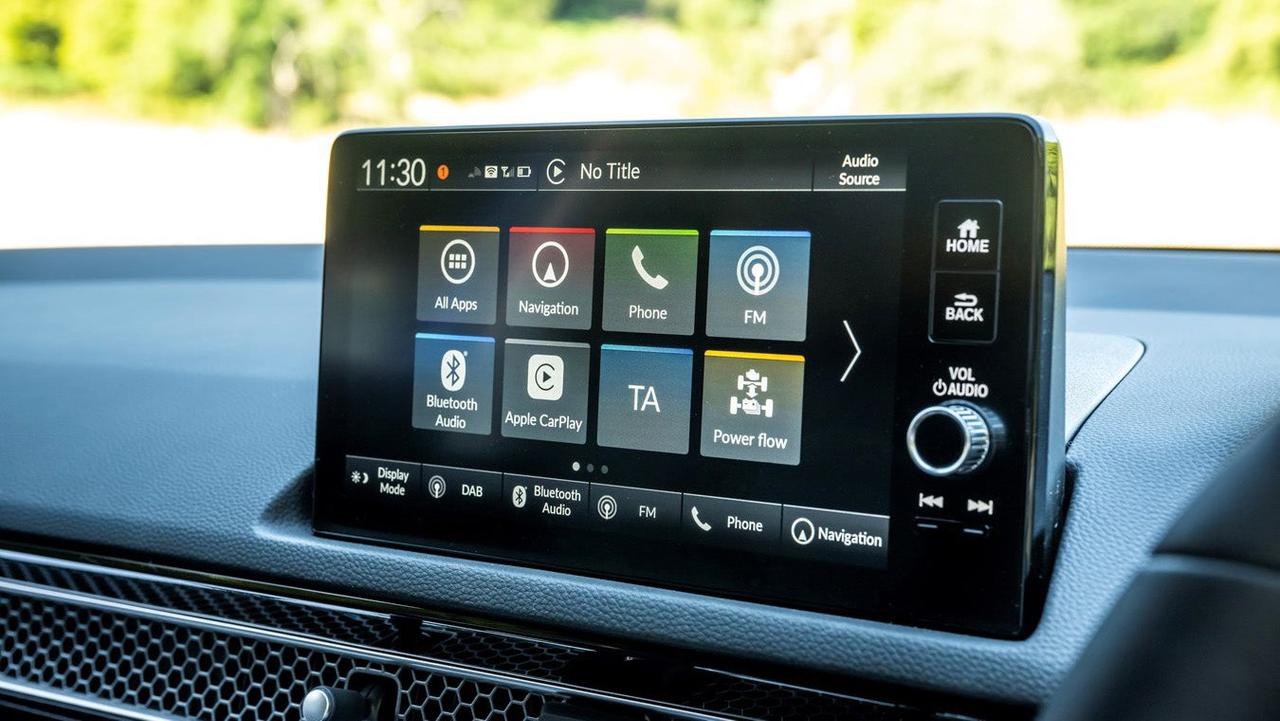
We do like that the screen has back and home buttons, as well as a bed of shortcut keys that stay there whenever you’re using the native infotainment system. And the home menu tiles are easy to use and quick to respond.
Elegance is the least expensive trim level, but it’s still packed full of equipment such as keyless entry, dual-zone climate control, adaptive cruise control, heated front seats, 17-inch alloy wheels, LED headlights and a reversing camera.
Sport trim is next, with black 18-inch wheels, part-leather-effect upholstery, wireless phone charging and gloss black exterior trim. Top-spec Advance adds electrically adjustable front seats, a larger digital instrument cluster, a heated steering wheel, an upgraded 12-speaker sound system, two-tone diamond-cut wheels and a panoramic sunroof.
Practicality
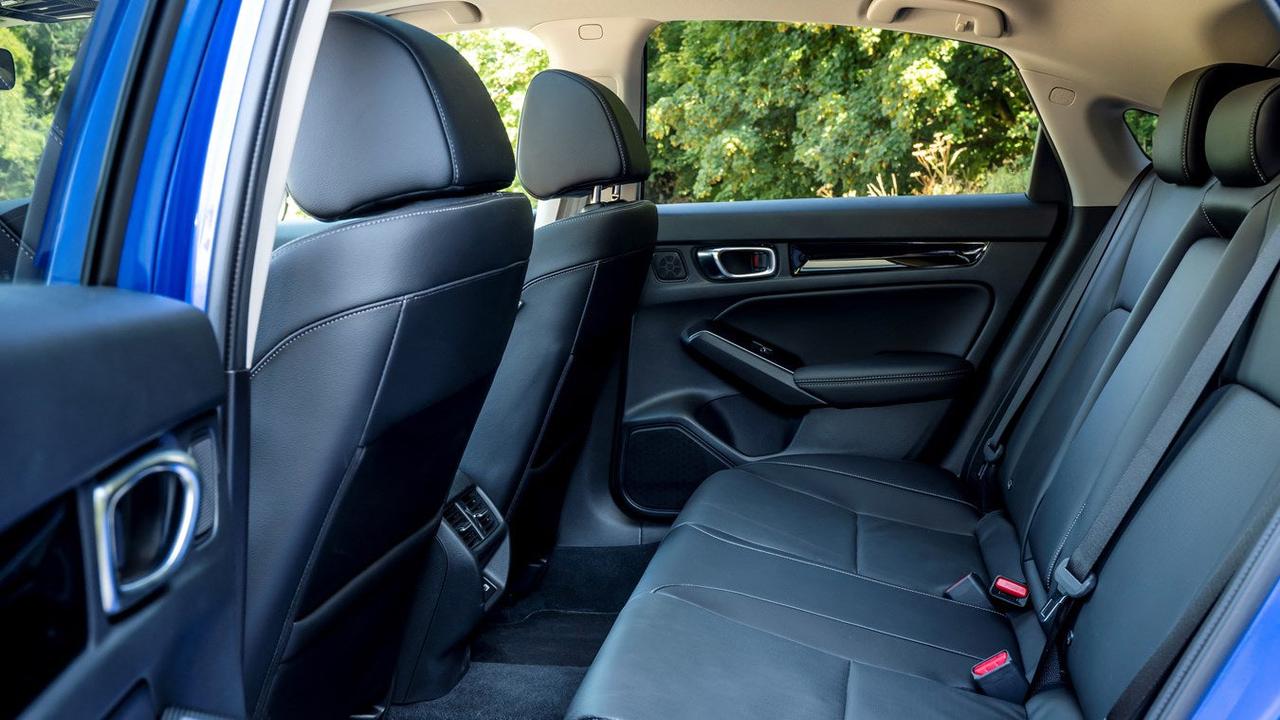
You’re likely to cross-shop the Civic against other hatchbacks like the Ford Focus and Toyota Corolla, but the Civic is actually much longer than most of its rivals. At 4.55 metres long, it’s almost 20cm longer than a Focus. And it puts its size to great use.
The rear-seat legroom is up there with the very best in the class, although the Civic’s rakish shape means headroom will be tight for tall adults. There are USBs, a central armrest with cupholders, map pockets and the same high-class materials and build quality as in the front.
Interior storage is pretty good, with a usable glovebox and a few cubbies here and there. As we said about the ZR-V, though, there’d be even more space if Honda didn’t insist on a row of four completely different buttons for the gear selector.
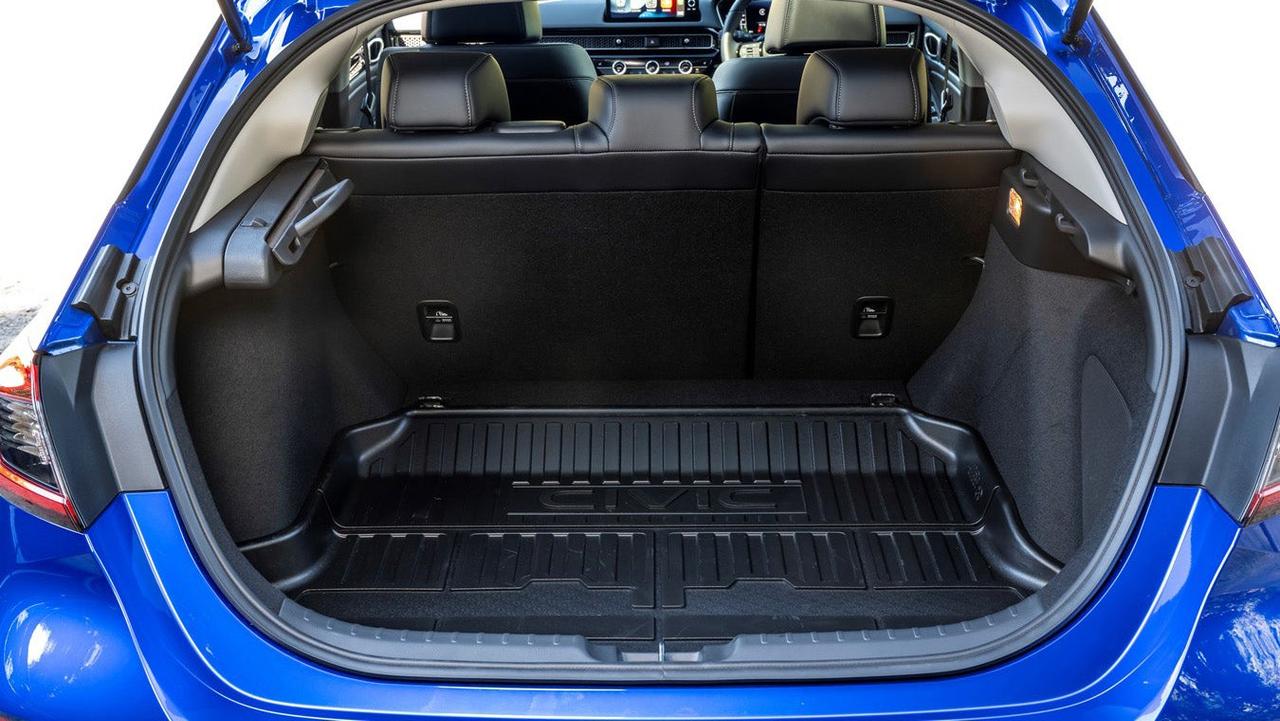
Further back, the boot measures 410 litres – which is actually a little more than the ZR-V offers, as well as more conventional rivals like the Focus and Volkswagen Golf. It’s slightly surprising (but not an issue for us) that the top-spec car doesn’t get a powered bootlid, but the space is wide, deep and easy to access. Another little quirky touch is that the load cover slides across sideways.
Engines and performance
Presuming you’re picking the standard Honda Civic and not the blazing fast Type R, there’s just the one engine available. It’s a 2.0-litre petrol-hybrid engine with a combined output of 181hp – a decent amount for a car this size. The upshot is a brisk 0-62mph time of around eight seconds.
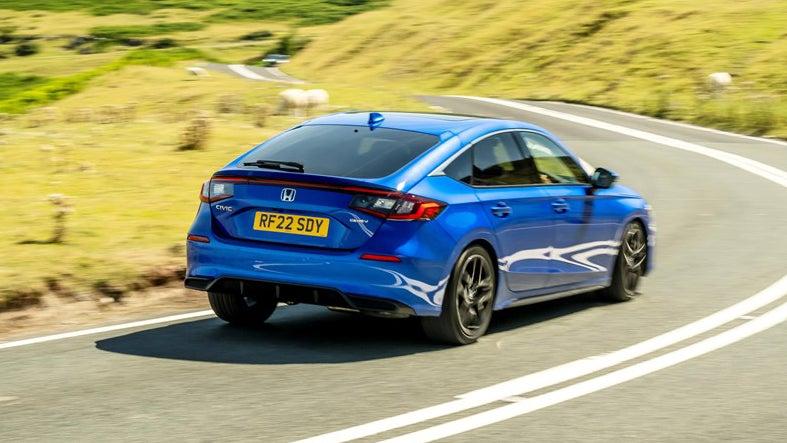
The Civic’s battery recharges from the engine and from braking, which is sometimes referred to as a ‘self-charging’ hybrid. Even though it doesn’t need to be plugged in like a Mercedes A-Class hybrid, it’ll manage 56mpg. Perhaps more in urban stop-start driving.
Honda’s e-CVT automatic gearbox doesn’t have gears as such, but Honda has added simulated gearshifts to keep the engine quiet and make the car feel like a conventional automatic. Some e-CVT-equipped cars can be very noisy when you ask for heavy acceleration, such as the Corolla, but the Civic remains composed even at high speeds.
Driving and comfort
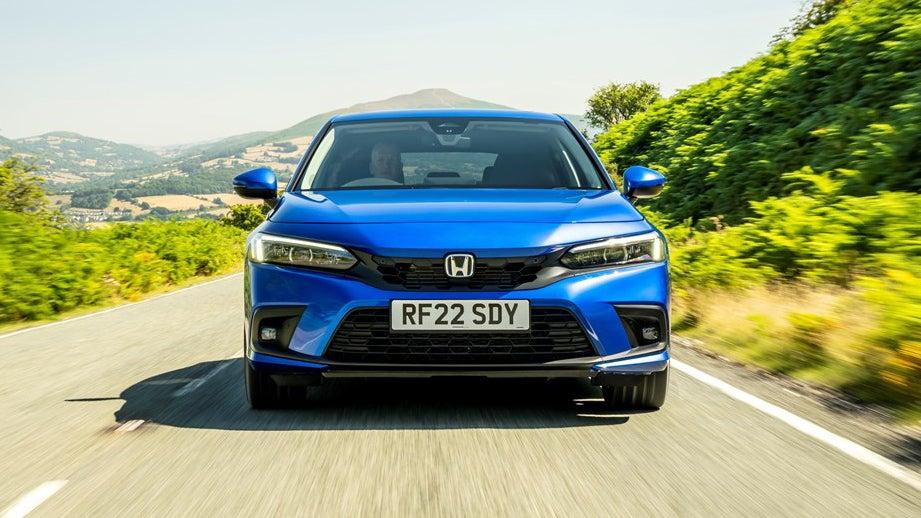
Simply put, the Civic is a joy to drive. It seems like it’s been perfectly set up for normal driving – just as the Civic Type R is perfectly set up for fast driving. The powerful engine and instant response from the hybrid motor, plus the well-behaved gearbox, make it really easy to accelerate up to motorway speeds.
The steering is eager and accurate, and you don’t need to put lots of lock on. In most situations, you won’t need to cross your hands to make a turn, which is a feature that Porsche always has on its cars.
Grip is really impressive, which is in part down to Honda’s decision to fit premium Michelin Pilot Sport tyres.
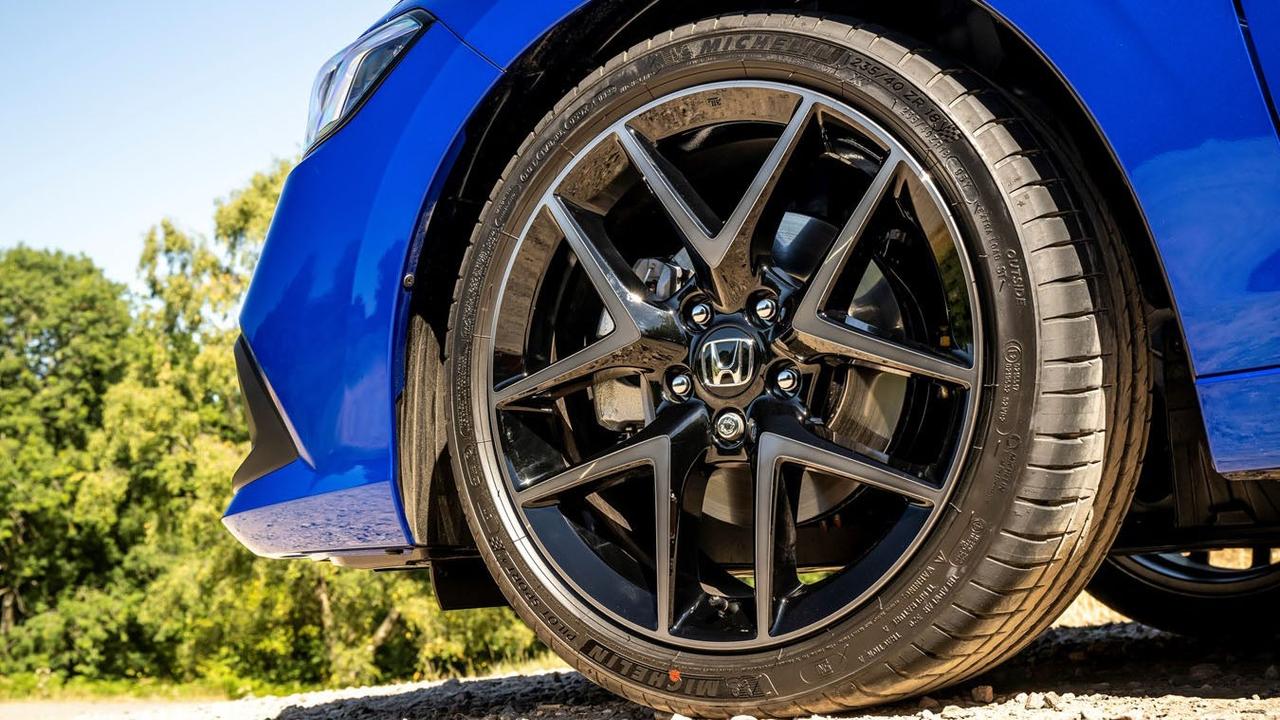
And the ride is quite BMW-like, because it’s firm and sporty but never uncomfortable. The harshness is completely taken out of impacts, and motorway cruising is refined. It flows really nicely down an undulating B-road, giving you the confidence to drive faster than you would in similar cars.
At lower speeds, the driving experience is even better. In traffic, the motor and engine seem perfectly in sync, making progress smooth, serene and economical.
Our only real gripe with the Civic’s driving experience is that it’s very difficult to turn some of the driver assistance functions off. And there are many safety functions, all as standard, including lane-keep assist, traffic sign recognition and the ability to almost drive itself in low-speed traffic. Most of them aren’t over-sensitive and annoying. Some of the functions have to be disengaged while the car is stationary, and some are buried in submenus. We wish Honda had taken the same steps as Renault and Hyundai, where the driver assist functions can be turned off with just a couple of button presses.








































